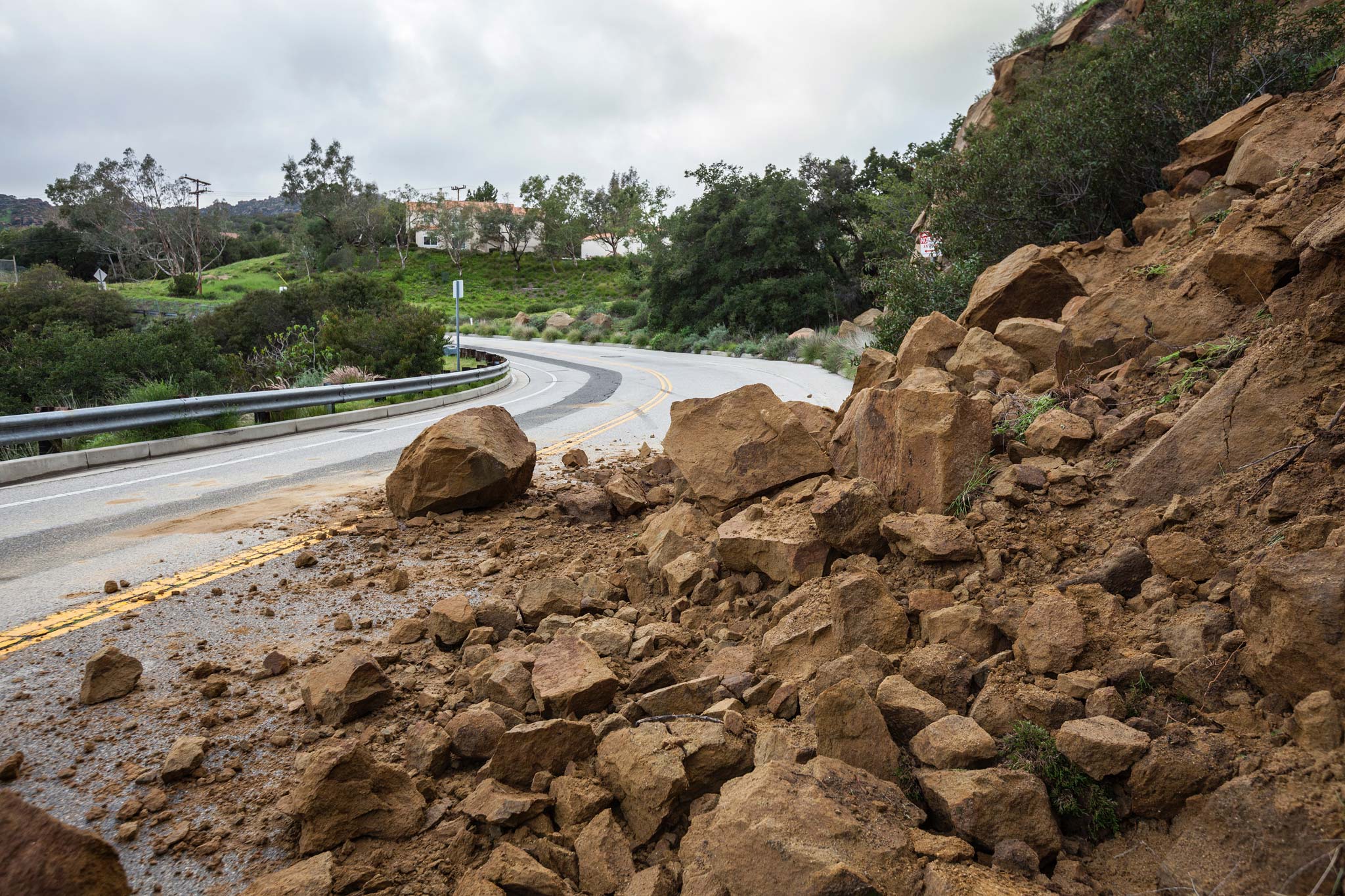
Geological Events
Occurrences that change the surface of the Earth or the structure of the Earth that lies below the ground.
Earthquake
A series of vibrations or seismic waves induced in the Earth’s crust (outermost layer) by the abrupt rupture and rebound of rocks in which elastic strain has been slowly accumulating. Earthquakes happen most frequently along geologic faults. Major fault lines on earth lie on the edges of huge tectonic plates that make up the Earth’s crust. Earthquakes happen infrequently in West Virginia and are rarely above 2.5 on the magnitude scale meaning that they are rarely felt, and if they are felt, only do minor damage. However, it is not outside the realm of possibility for a larger scale earthquake to occur, and being prepared for one may help save a life. If an earthquake occurs, stay outside if you are outside and stay inside if you are inside. The greatest risk during an earthquake is from falling debris. Make sure to move away from any buildings and utility lines both above and below ground. The most likely area for debris from a building to fall is around doorways and close to the outer walls of buildings. If you are outside, go to an open area devoid of trees and buildings. If you happen to be driving, pull over and stop while setting your parking brake.
For more information, visit these links:

Landslide
The downward falling or sliding of a mass of soil, detritus, debris, or rock on or from a steep slope. Landslides are primarily caused by the downward force of gravity on earthen materials. There are catalysts that can exacerbate the materials, causing them to slide and fall. These include rainfall, snow and snow melt, changes in water level such as flooding, stream erosion, changes in groundwater, earthquakes, and human activities that cause disturbances. In West Virginia the primary causes of landslides are typically due to rainfall that leads to erosion or to a mudslide. Human activity is also a culprit, such as the Yeager Airport mudslide that occurred in 2015 due to engineering errors. You may hear an impending landslide before you see it. If a landslide occurs near you find cover in a section of the building that is furthest from the landslide, preferably under a strong table or bench. You should also brace yourself by holding on firmly until all movement has stopped. If you are outside, run to the nearest high ground that is away from the landslide. If you do see that there are rocks in the landslide run to the nearest shelter. This can include a building or a group of strong trees. If you are not able to avoid the landslide, curl yourself into a tight ball and cover your head with your hands.
For more information, visit these links:

Subsidence
The gradual sinking of landforms to a lower level as a result of earth movements, mining operations, etc. Subsidence is typically caused when a cavernous area, such as an abandoned mine, has filled with water and the water has withdrawn from the area. This leaves an unsupported area with tons of rock and earth above it. The ground then collapses to fill this void. Another common cause is the excessive pumping of underground water, which again leaves an unsupported cavernous area. Subsidence can oftentimes be unnoticeable in day to day life; however, if you do notice the gradual change, notify a surveyor. In West Virginia, you may want to notify the WVDEP’s Abandoned Mine Land branch because the cause may be linked to an abandoned mine that has leaked which could result in more serious issues.
For more information, visit these links: